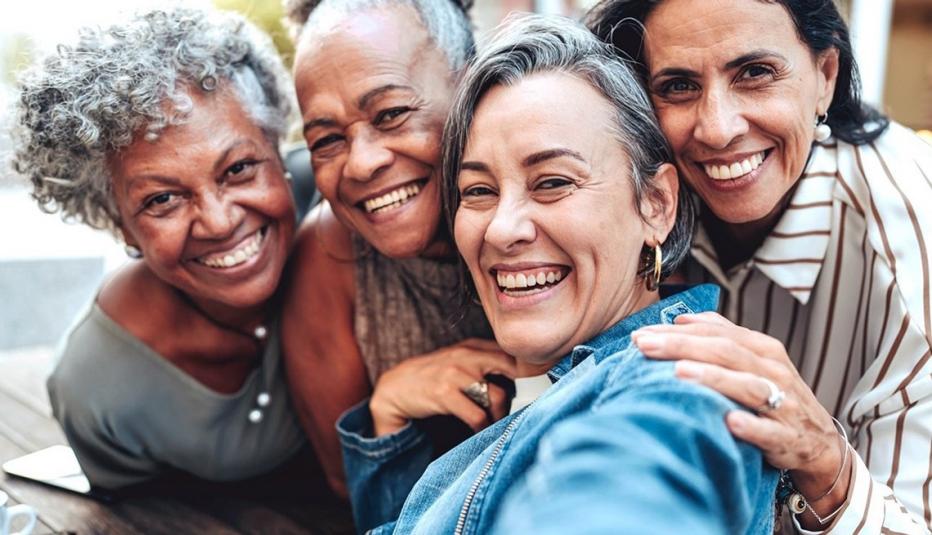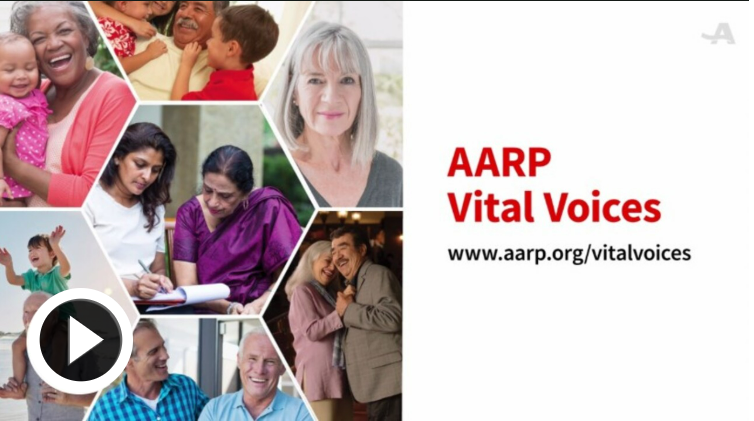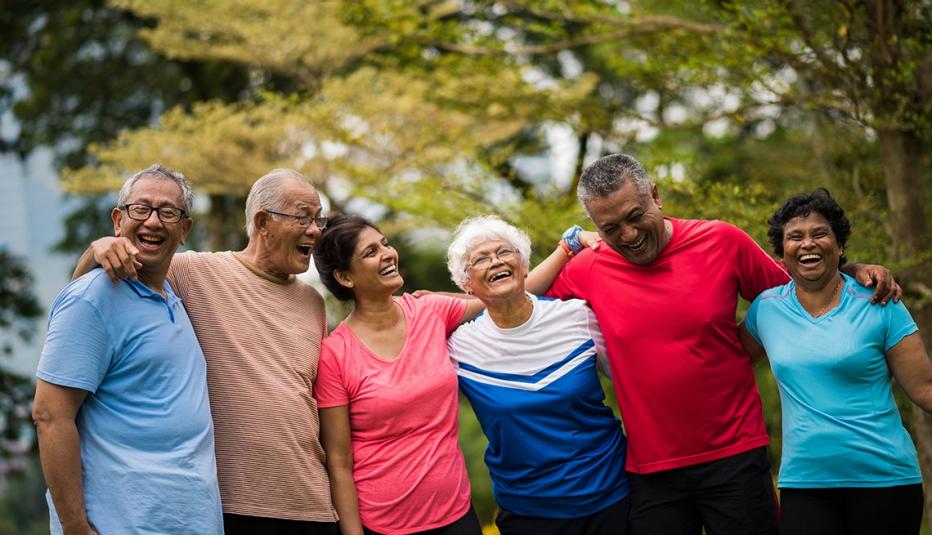AARP Hearing Center

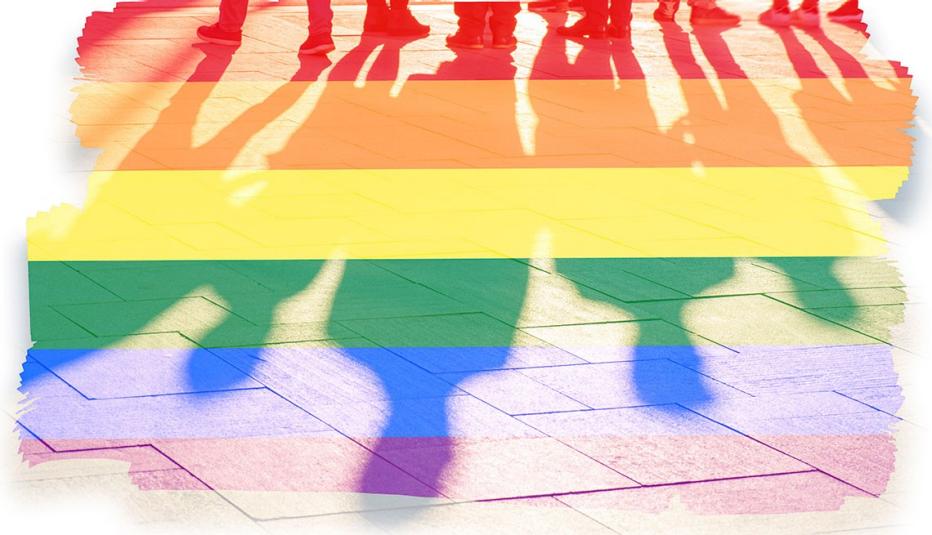
Insights on Concerns and Preferences of Mid-Life and Older LGBT Adults
Three out of four adults age 45 and older who are lesbian, gay, bisexual or transgender say they are concerned about having enough support from family and friends as they age. Many are also worried about how they will be treated in long-term care facilities and want specific LGBT services for older adults.
These were among the findings of a recent national AARP survey, “Maintaining Dignity: Understanding and Responding to the Challenges Facing Older LGBT Americans.”
Partnering Patterns and Support Networks May Affect Future
Same-sex couples do not “partner” at the same rate by gender. Survey data shows gay men age 45-plus are far more likely to be single (57%) and live alone (46%) than lesbians, 39% of whom are single and 36% live alone. When asked about their social support network, gay men report being less connected than lesbians on every relationship type tested, from friends, to partners, to neighbors. This may put gay men at greater risk of isolation and potentially influences the types of services they will need later in life.
Transgender or gender expansive individuals are also less likely to be connected to sources of social support. Although more than half (53%) of transgender or gender expansive survey respondents have children or grandchildren, this group is least likely to say they consider gay or straight friends, family or neighbors part of their personal support network, putting them at increased risk of isolation now and as they age.

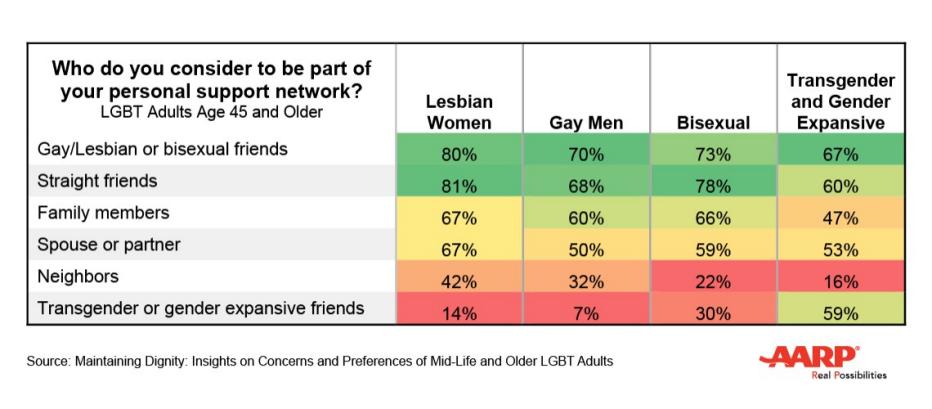
In Search of LGBT-Friendly Communities
Older LGBT Americans live in cities and towns of all sizes. Just under one-third of those surveyed live in big urban cities, while the rest reside in suburbs, medium-sized cities, or small towns and rural areas. Yet 83% of respondents say they live in at least a somewhat LGBT-friendly community including many in smaller or rural areas. Survey responses suggest that community size is less important than LGBT-friendliness when it comes to living in a supportive community.
Nevertheless, the share of residents with access to LGBT community resources is significantly higher in bigger cities compared to smaller and more rural areas, but health and senior services still lag everywhere. Just 48% of big city residents surveyed and as few as 10% of rural and small town residents say they have access to LGBT senior services in their community.
Housing access is another dimension significantly impacted by the LGBT-friendliness of the community. Survey respondents living in what they describe as very un-friendly communities were seven times more likely to report recent experiences with housing discrimination due to their LGBT identity (14% vs. 2% in LGBT-friendly communities).
When asked if they are worried about having to hide their LGBT identity in order to have access to suitable housing options as they age, 34% of all LGBT survey respondents reported being at least somewhat worried, as did half (54%) of transgender and gender expansive participants.
These data underscore the importance of federal and state anti-discrimination laws to protect all LGBT Americans wherever they live as well as the desire for safe housing. The survey found very high levels of interest in LGBT-welcoming older adult housing developments: 90% of respondents were extremely (35%), very (27%) or somewhat (28%) interested in that option.
One More Reason to Worry about Health Care – Especially for LGBTs of Color
While many respondents share the same trepidations about aging as all older Americans, those in the LGBT community have the added worry about the potential for discrimination based on their sexual orientation or gender identity in the areas of health care and long-term care as they age.
Concerns within the LGBT community about long-term care are great, particularly for gender expansive individuals. Majorities cite concerns about neglect, abuse, refused access to services, or harassment. The possibility of being forced to hide one’s identity as a condition of receiving care is a concern for just under half of lesbian, gay and bisexual respondents and for 70% of transgender and gender expansive respondents.
Gay men, lesbian women and bisexuals of all racial and ethnic groups are about equally likely to worry that their sexual orientation and age may have a negative impact on the quality of care they receive from health care providers as they age. However, for black and Latino community members, they are also far more likely to be concerned about their race or ethnic identities, as well as gender identity, putting them at risk for poor quality of care. Rather than one type of discrimination out-ranking others, black and Latino members of the LGBT community carry additional reasons to feel vulnerable in the health care system.
Finding Suitable Health Care Providers
Despite concerns about prejudice affecting future quality of care, most LGBT survey respondents are relatively satisfied with their current health care. Eighty-seven percent (87%) of respondents have at least a good relationship with their health care provider. Finding suitable providers by mid-life and beyond may have taken some trial and error that included a negative experience; such experiences, in fact, could be a source of their concerns about the quality of care they would receive in an emergency health situation or if they find themselves in need of long-term care in the future.
The survey found high demand for long-term care providers who actively welcome the LGBT community and demonstrate awareness and knowledge of the specific needs of LGBT adults as they age. More than eight in ten survey respondents say they would feel more comfortable with providers who are specifically trained in LGBT patient needs (88%), use advertising to highlight LGBT-friendly services (86%), have some staff members who are LGBT themselves (85%), or display LGBT-welcoming signs or symbols in facilities and online (82%).
These findings are based on data collected from October 27 to November 12, 2017 through an online survey of 1,762 lesbian, gay, bisexual, and transgender (LGBT) Americans age 45 and older. The national sample includes n=627 lesbian or same gender loving females; n=680 gay or same gender loving males; n=162 bisexual or pansexual women and men; and n=264 respondents who identified as one of the following “gender expansive” categories: transgender, trans woman, trans man, gender non-binary, genderqueer, gender fluid or intersex. Gender expansive participants were intentionally oversampled to allow for analysis and data reporting of this segment. See the full method statement for more details on sampling and data weighting.
For more information contact Angela Houghton at AHoughton@aarp.org.
































































